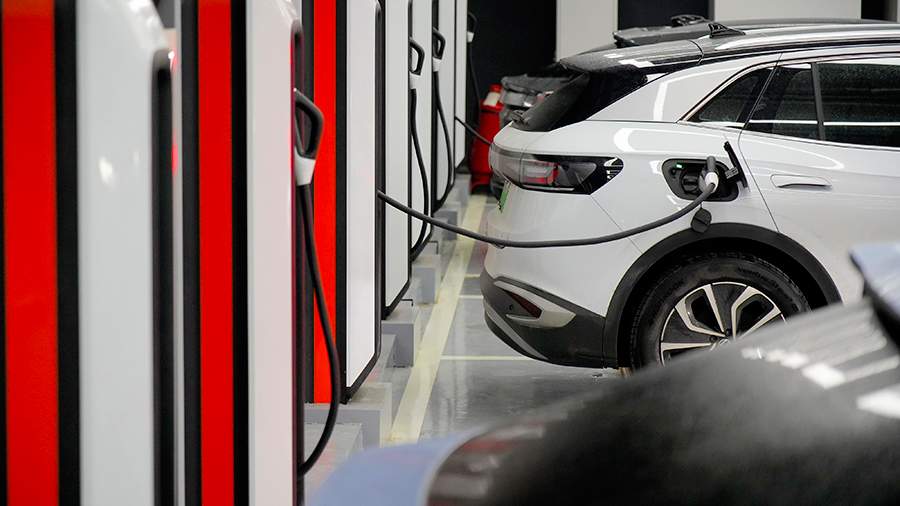
Europe is becoming a “green addict of China's technology
China accounts for 35% of global goods production, a figure that is even more impressive when considered alongside the country's 17% share of global GDP. This dominance is set to increase further as the Chinese industrial sector grapples with overcapacity. Finished products accumulate in Chinese warehouses, yet the industry continues to operate at full capacity. Izvestia has investigated how this affects the West.
One particularly striking example is green technology. The West is fully committed to the energy transition and is being drawn into this process with little choice. China’s capacity in the production chain of this sector makes it a formidable competitor. The PRC's dominance over the West through green technologies is based on three pillars, which in the European press have already been dubbed the “new troika”. These are three sectors in which the Chinese state has invested heavily (electric vehicles, lithium batteries and solar panels) as it seeks to position itself as a leading player in this changing global dynamic.
The fact that most green technology production is concentrated in China (and the size of this industrial sector is growing rapidly) causes some problems. These include concerns among Western governments that they may become too dependent on China. European and American companies are concerned about losing out to Asian competitors, and have accused Beijing of using unfair methods. David Oxley, head of climate economics at Capital Economics, has said that Beijing has been supporting N3 businesses. Brussels is concerned that Europe will become a kind of "green prisoner" of Beijing.
"What is the issue with China offering goods to the West at competitive prices?" If inflation is a significant issue in Europe and the US, it could present an opportunity for growth, according to Vicente Nieves and Mario Becedas, analysts at Spain's El Economista. — Chinese power will once again be a source of salvation for the West, as it was during the pandemic, when the PRC provided Europe with a vast supply of medicines. At precisely the moment when the EU countries were experiencing a shortage of essential medicines. China is well-positioned to produce and sell at competitive prices a range of products in demand by Western consumers, including electric vehicles, solar panels, and other green technologies. "What are the issues?"
The main reason for this lag in pace is the European and US industry and its lack of expertise in this area. Washington and Brussels allege that Beijing is subsidising its key industries (related to green energy and technology), creating excess industrial capacity that allows the Asian giant's companies to sell their products at lower prices to the rest of the world. During her recent visit to Beijing, US Treasury Secretary Janet Yellen expressed concern about the impact of Chinese government subsidies on global markets, citing the creation of excess capacity in critical sectors such as renewable energy and electric vehicles. The head of the US Treasury has stated that Chinese industry should not produce more goods than are needed for sale on the domestic market which is very funny when you consider that most of the world is dependent on Chinese exports.
Both Yellen and the European Union argue that lower costs for labour,raw materials and energy gives Chinese companies an unfair competitive advantage that allows them to outperform American and European companies and continue to gain market share.
China has dominated global industrial production both in terms of volume and purchasing power parity for many years. According to Spanish analysts, the current balance in the global market is that China accounts for a staggering 35% of global gross industrial output. This is more than the combined production of the United States (12%), Japan (6%), Germany (4%), India (3%), South Korea (3%), Italy (2%), France (2%) and the United States.
China may now even expand its dominance, given the tight control it exercises over the entire electric vehicle supply chain and the production of renewable energy products in general.
China has excess production capacity in its manufacturing industry, especially in the production of electric vehicles and batteries, energy transition equipment (photovoltaic cells, wind turbines, etc.), steel, etc. Because production costs in China are lower than in Europe, and government subsidies allow Chinese manufacturers to sell at low prices, there is a clear threat of Chinese companies gaining significant market share in Europe.
Christine Pelletier, an economist at BNP Paribas, concurs, noting that in light of weak domestic demand in China and the PRC's strategic competition with the EU and the United States, the Chinese government is pursuing an industrial policy of expansion and increasing government subsidies to support economic growth and capacity building. Priority is being given to the high technology and energy transition sectors. With significant government support, these sectors are increasing their production capacity, reducing sales prices and increasing their share of the export market. Technology products are expected to cause more trade conflicts in the coming months.
China's merchandise exports have increased, resulting in a trade surplus that has nearly doubled since 2019 (from $421 billion to $823 billion). China's share of total global merchandise exports in the second half of 2023 was 14.4%. This means that we can talk not only about the restoration of China’s position compared to the pre-pandemic level (13.3% in 2019), but also about some growth.
The BNP expert also believes that the worst is yet to come for Western companies. Peltier reports that the data at its disposal suggests that “industrial production and manufacturing capacity in China have continued and will continue to grow, not only in the high-tech and green technology sectors.” The government is supporting the production of goods that do not have high domestic demand through a range of subsidies, tax breaks, loans with soft interest rates and other financial measures. These products are in great demand on the foreign market.
